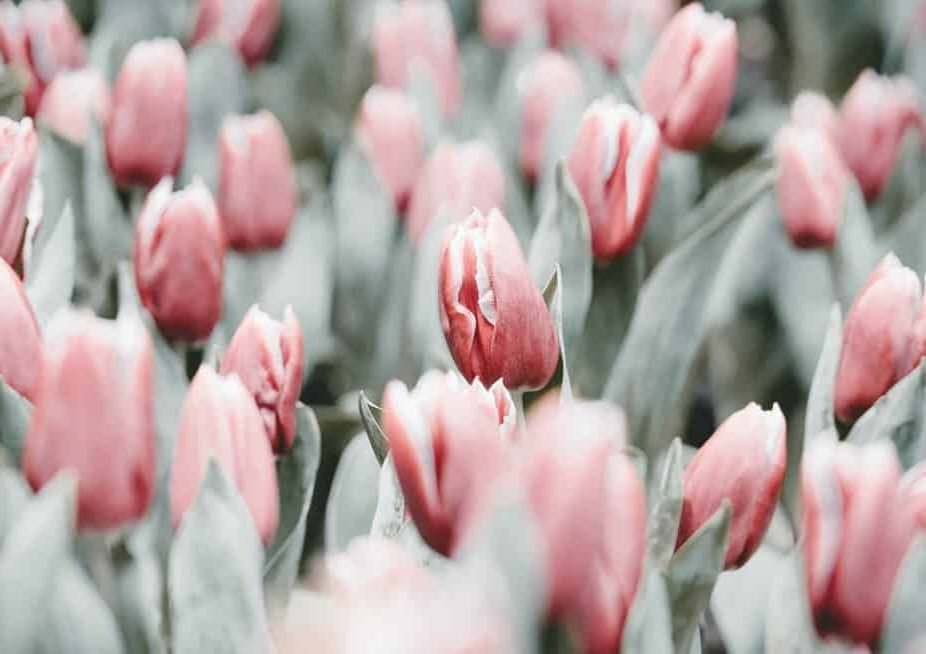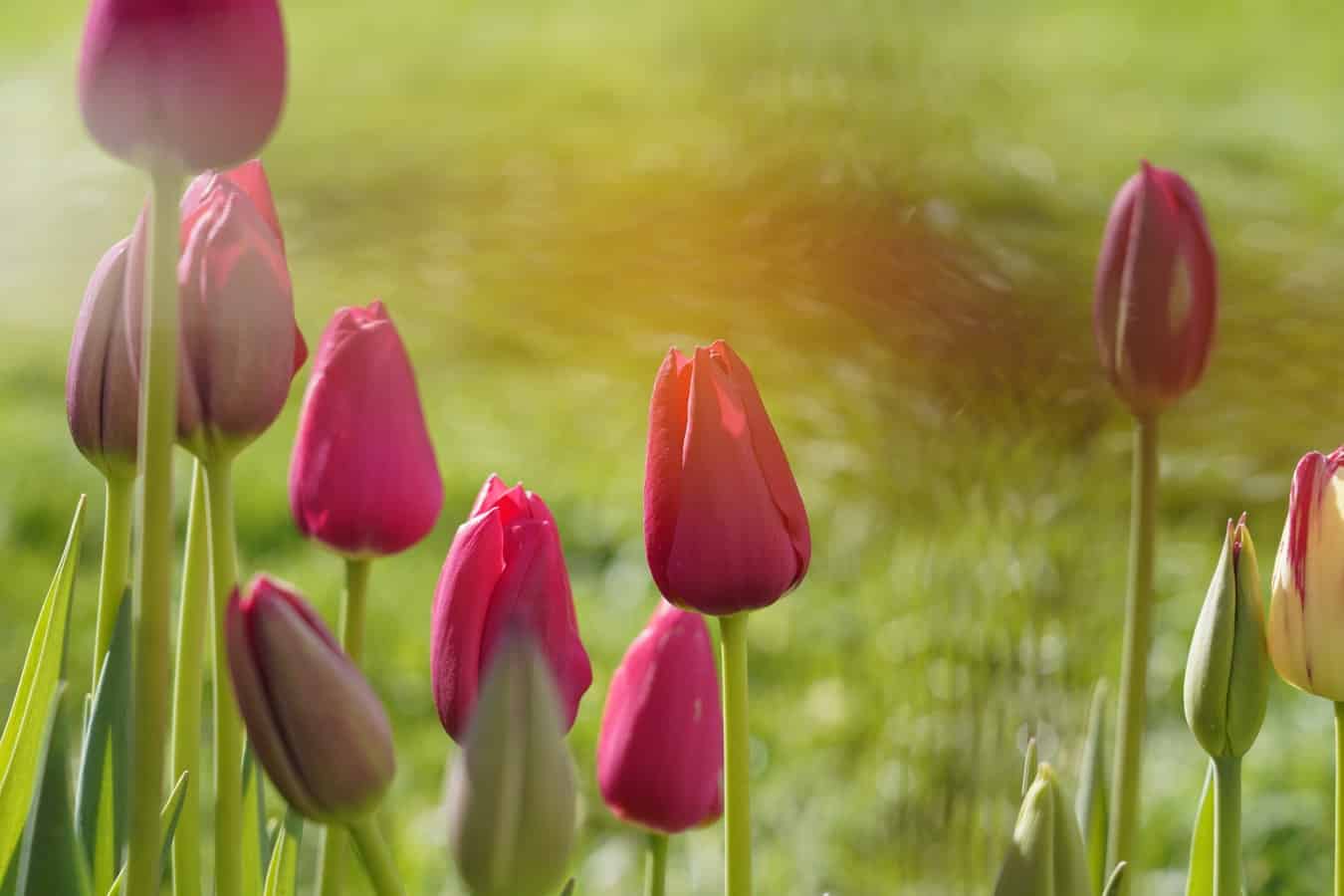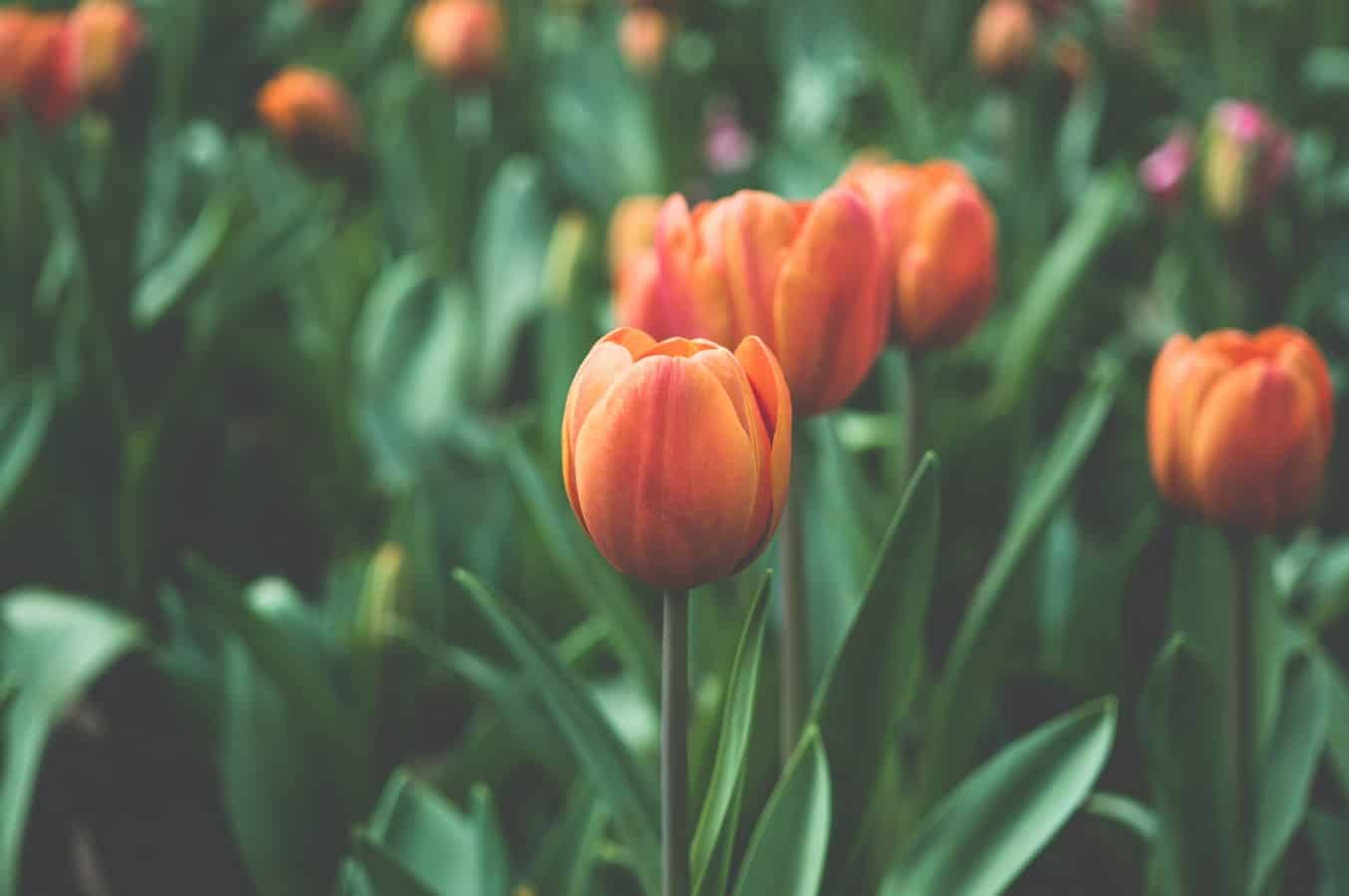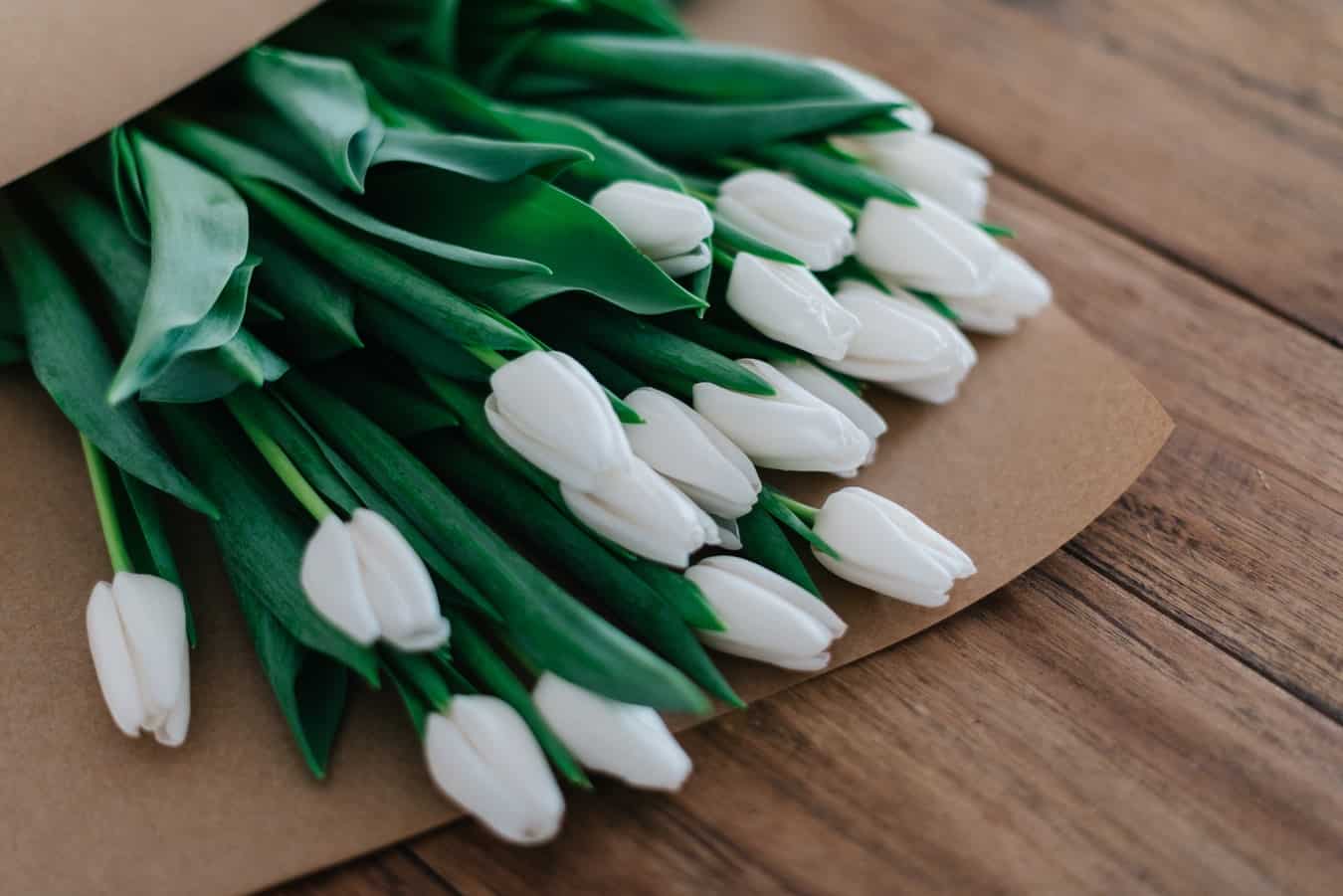Tulips are generally known to be the harbingers of spring, and gardeners love this plant. And we know how disappointing it could be if they do not grow well.
![Why Tulips Don't Bloom & What You Can Do [Actually Works!] Why Tulips Don't Bloom & What You Can Do](https://homesthetics.net/wp-content/uploads/2020/10/Why-Tulips-Dont-Bloom-What-You-Can-Do-Actually-Works-3.jpg)
They are cheerful and sprightly plants that usually begin growing in March or April. The plant grows well in zones 3 to 9, according to the U.S. Department of Agriculture and can cover large stretches of land.
Tulips do not need a lot of taking care of. If you give them a favorable environment, they will be growing well. However, it is best to know about the conditions and the factors that could go wrong before you grow tulips.
Unsuitable temperatures, sudden changes in weather conditions, and pests are primary reasons they do not grow. We have discussed them in detail in the following section. This is followed by some tips to encourage the growth of these plants.
So, it is time to grab a cup of your favorite beverage and read on.
Related Articles
30 Types of Pink and Fuchsia Flowers to Consider
6 Beautiful Houseplants Safe For Cats And Dogs That You Should Know About
Reasons Why Bulbs Do Not Grow

Although many gardeners will tell you it is a cakewalk to grow tulips, there are a number of factors that could lead to the bulbs dying or decaying. It is essential that you know all of the reasons, and then you can figure out what might have gone wrong in that case. Read on to know all about it.
-
Immature Bulbs
Immature bulbs are one of the significant reasons behind tulips not blooming. While gardeners make it look effortless to grow them, you will need a favorable environment. Make sure that the buds are firm while planting and throw out the soft or squishy ones. Also, all the bulbs need to have some amount of roots at the base.
Coming to the temperature, it is essential that the temperature does not fall below 4 degrees centigrade. Otherwise, there is a high chance that the buds will not survive.
Keep checking the bulbs for growth after a few days of planting them. If you see no growth at all, take some of the buds out to examine the roots. If you see that they have grown dark or are decaying, you can throw away the bulbs as they will not be growing.
Remember that some bulbs could just be immature and may take more time to grow. If you do not find any defects in the bulb, let it stay for a year before you throw them away. It may start growing after a few months.

-
Planting Time
Early planting of tulips can result in fungal diseases as these bulbs do not grow in very cold weather. It is difficult to determine the right time for this process and can be problematic in places with varying temperatures.
Warm weather can trigger growth and may be best for your plants. But when you plant the bulbs, it will need a cool environment to blossom initially. So, make sure that the weather has started cooling down before you plant the bulbs.
A good time to plant is when the leaves start falling from the trees. This is when they will get the right temperature and enough time to nurture. Remember that if you plant too late, the bulbs may not grow for an entire year and so it is essential that you time it carefully.
-
Finding The Right Depth
Every plant has a different depth in which they can comfortably blossom. In most cases, the right depth will be mentioned on the package itself. Follow those instructions carefully as the wrong depth may kill your bulbs or increase the time taken by it to grow.
If the bulbs are planted too deep, they will take a lot of time to reach the surface. On the other hand, if they are planted too high, then they might not receive proper insulation. Hence they will be exposed to heat and cold and may not grow further.
The average depth should be 2-3 times the length of a bulb. That should ensure proper germination and if you think the temperatures are going to fall, add a layer of mulch. Mulch will prevent the cold from directly reaching the soil and will keep your bulbs safe.

-
Location
Although tulips can flourish in large numbers while they are packed together, it is essential that they do not have to fight for resources. If you pack too many bulbs in a small space, some of them may die from the lack of light, water, and nutrients.
In case you understand that there are too many bulbs, divide them up after the flowering season is over and plant them in a different location. It is best to leave smaller buds in the ground, and they will begin growing in a few years.
Also, the plants should get enough sunlight. This is a key factor, and if the area is not exposed to direct sunlight, it is best to shift the location. That will ensure that they start developing faster.
-
Right Amount Of Sunlight
Sunlight is important, as we discussed in the previous section. However, different types of plants need different amounts of sunlight. Some plants germinate well in full sunlight, which means being exposed to direct rays for 6 hours every day. Others grow well in filtered sunlight and dappled shade. These can be planted in nurseries or under trees.
It is essential to know what your plant needs, and hence you can contact a nursery before beginning planting.

-
Water And Drainage
Well-aerated soil is the best kind of soil for tulips to develop. Water drains quickly through this kind of soil and allows the tulip to grow well. Check the soil before you plant the buds. To do this, dig a large hole and fill it with water.
If the water disappears in 10 minutes or less, it will work well with drought-tolerant plants. While if it takes up to an hour, it will work with bulbs, and you can plant your tulips in it.
However, if it takes more than an hour to drain, the soil is not suitable for tulips to grow. If you plant bulbs, they are susceptible to water-logging problems, which will lead to rot fungus.
-
Changing Temperatures
Changing temperatures may not work out well for bulbs. If the change is gradual, they adjust to it, but often it is very abrupt. Temperatures in spring can change very quickly, and there can be a difference of 30 degrees within 24 hours or so. This does not work well with bulbs, and smaller, tender bulbs can bloom late because of it.
But this can also be stunting the growth, and there are times when bulbs spring up post-winter. Once the snow fades away, they can grow out. Our suggestion is to cover the land with layers of leaves. This will protect the bulb from direct contact with snow and help in the insulation process.
-
Amount Of Fertilizer Needed
We should tell you that tulips can grow well even without any fertilizer. In fact, we prefer it that way. Take good care of all your plants in general, and you should not need any extra fertilizers.
But sometimes, it is specified on the packet that you need to add fertilizer once a year. Time it accordingly and ensure that you do not do this in the flowering season because the flowers might not be able to take it.
If you have added fertilizers and the bulbs have not bloomed, it is best not to add it further. Let them grow under the sun or shade with ample amounts of water.
-
Insects
Insects love to munch on bulbs and leaves, and hence these are your plant’s enemies. If you see bulbs disappearing within a night, you will know that there are animals or pests around. We found a great way to stop squirrels from digging holes. A framed wire mesh was created and placed around the place to prevent them from entering.
But there is no real solution for preventing other insects and animals. All you can do is change the location. You might find shaded areas under big trees to be the perfect place to grow tulips, but these could be the most infested places too. Make a note of it before planting.

Tips To Encourage Growth Of Tulips
At most times, when tulips do not bloom, they do not have the right climate or the environment to blossom. They adjust well to mountain temperatures where there are warm summers and cold winters. However, that will not be the weather condition in the plains. The trick is to grow them in an environment that is similar to that of mountains.
Also, it is important to remember that the soil needs to have good amounts of phosphorus for the tulips to keep growing every year. This is extremely important, and you should add phosphorus to your soil once every 12 months. That will keep the nutrient level on point and allow the blooms to grow.
-
Stay Away From Concrete Structures
Tulips need the cold weather to start blooming. The cold has to be moderate, and hence you plant bulbs in the fall season. Now, if you plant them very near concrete surfaces, driveways, foundations, then they generate warmth from these, and that could prevent growth. We have noticed that the flowers were not blooming well because of this.
Again, if the temperature is very cold, then you could grow them beside concrete structures.
-
Plant Old-Fashioned Tulips
Today there are a number of newer breeds of tulips that have been created. Hybrids are great to look at, but they are not likely to grow year after year. We would suggest that you shift to old-fashioned tulips, which are much more adjusting. They have always been blooming year after year and need the least amount of maintenance.
-
Do Not Pluck The Leaves
The leaves are the storehouses of energy, and hence they play an essential role in forming bulbs. It is absolutely vital that you do not chop off the leaves till they have withered. Tulips take a lot of nutrition from their leaves, and they have to be alive to provide it.
We would recommend snipping off blossoms which begin fading. This will save some of the energy which can otherwise be used to make seeds.
Final Words
It is best to plant tulip bulbs in mounds rather than directly in the flat soil. This will help the water drain better and will ensure that the roots are not affected by waterlogging. Also, the dry soil around will help them develop faster.
With this, we come to the end of this guide. We are sure that you have enough knowledge about how to go around planting bulbs and to ensure that they grow. If you are not too confident, you could try with a few bulbs and see if the environment is favorable. Once they show some signs of growth, go ahead, and plant new bulbs.
Gardening should be fun and rewarding, and you will be overjoyed to see your tulips blossom. Be patient and take these extra measures, and we are sure you will have a garden to boast about. And do remember to let us know how it turned out for you in the comment section below.
Until next time!

